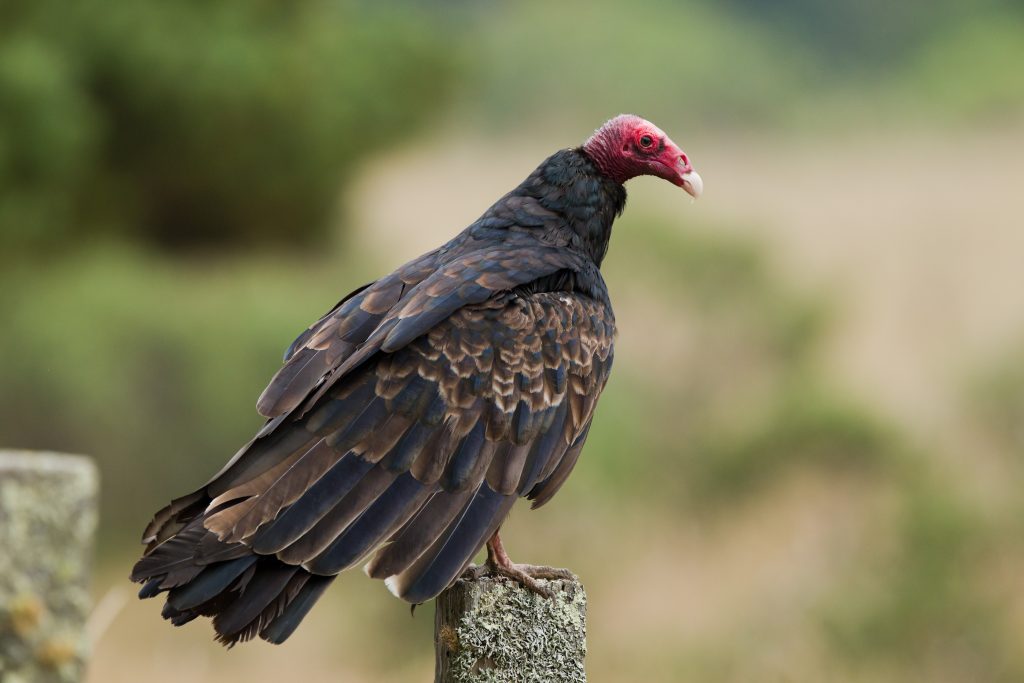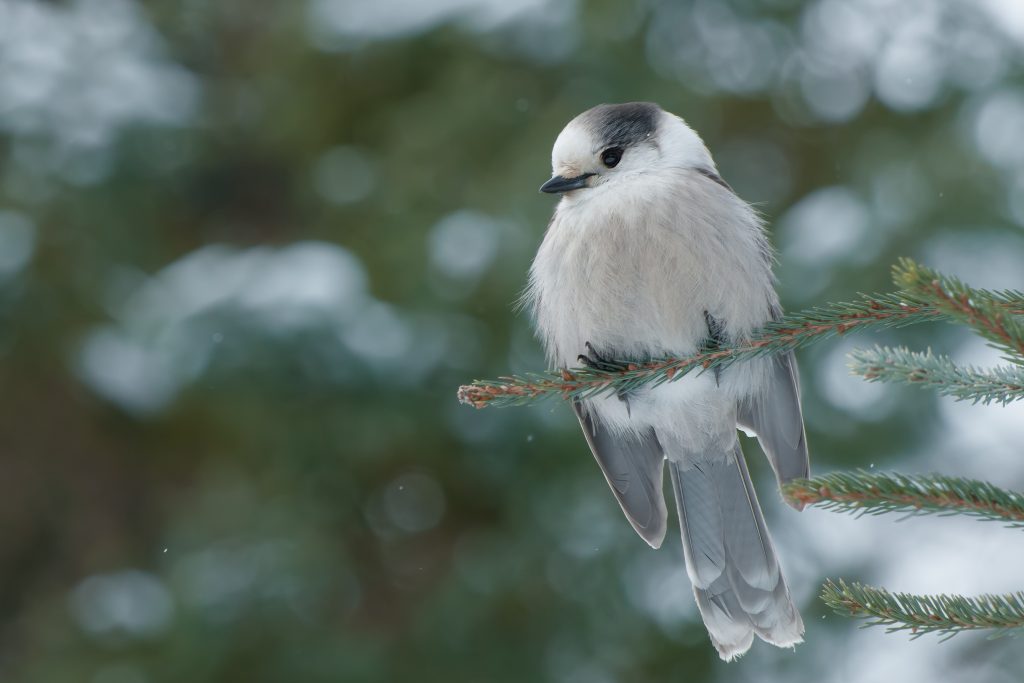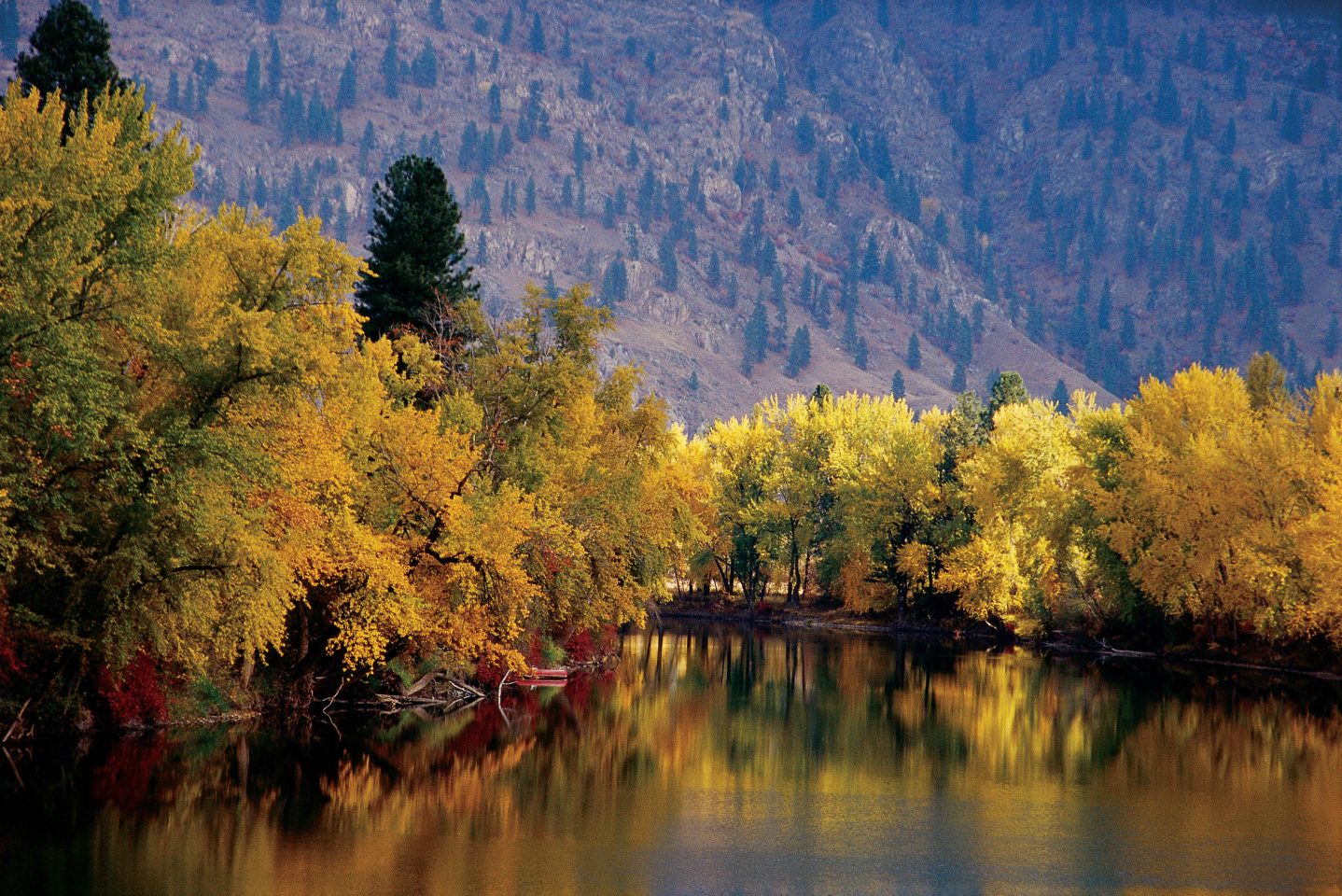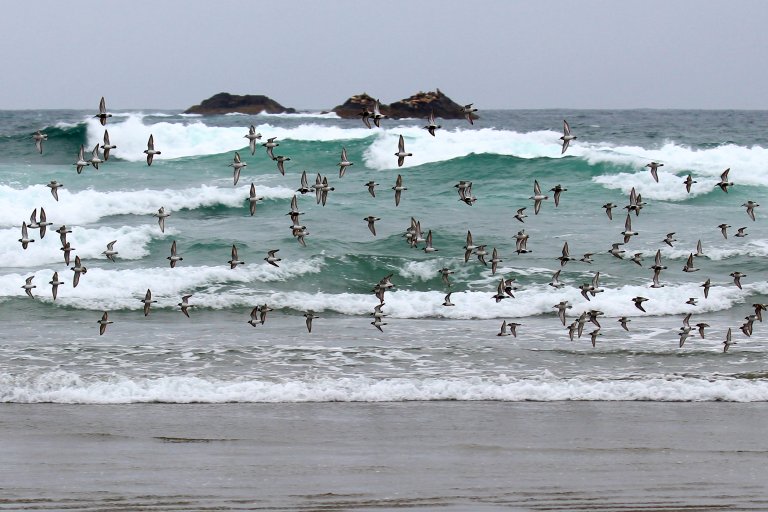The days are getting shorter, and it’s starting to get chilly out there, but birding in fall is one of the best times to enjoy the BC Bird Trail!
Why Go Birding in the Fall?
Fall is one of the best times of the year to go birding because of the large amount of bird migration taking place. All the BC Bird Trails and Outposts are ideally situated along parts of the Pacific Flyway, catching birds flying south seeking warmer climates. Some will stay for the duration of the winter to enjoy the tepid climate and abundance of food, while others only stop by for a break during their long journey farther south. During peak migration, birding can be quite exciting and local birding spots can change overnight, so every outing can offer new surprises.

BC Birding in Fall Tips
Don’t let the cooler temperature stop you – there are many advantages to birding in the fall. If you’re not a fan of the summer heat, fall birding offers more temperate weather, allowing you to be comfortable and stay out on the trails for longer periods. Also, since the weather is still pleasant, but not pleasant enough to draw summer crowds, you’ll have all the benefits of quieter trails for birdwatching. Just remember to bring layered clothing if you intend to stay out for a while – nice days can still mean surprisingly cold mornings and evenings. If you can, now is a good time to get back in the habit of keeping a set of warm clothes handy in the car.
Sure, lush green trees are lovely, but they’re not ideal for bird-watching. As those gorgeous, crunchy leaves fall to the ground, you’ll find an abundance of bare tree branches, far better for spotting our feathered friends, and it’s a great time of year to see woodpeckers for this very reason!

Later sunrises and earlier sunsets mean you can enjoy those higher bird activity hours and golden hours for photography at a more reasonable time than in the summer. Some other benefits of fall bird photography are that cooler mornings mean more chances of fog and mist adding some cool atmosphere to bird photos, while the fall colours themselves can also add some vibrancy to a shot.
With fall migrations taking place all over the province, be sure to check in with your local nature parks to see what community bird activities they may have planned, like hawk, eagle, or turkey vulture watches.

Fall Birds to Watch For
As one of the busiest times in BC for bird migrations, every region on the BC Bird Trail has exciting visitors. Turkey vultures are a common sight during fall birding in BC, as well as trumpeter swans along the Central Vancouver Island, Fraser Valley, and Columbia Valley Bird Trails.
Sea ducks like surf, white-winged, and black scoters, harlequin ducks, Barrow’s and common goldeneyes, and the elegant long-tailed ducks are more common to see throughout the fall. You may also spot common, hooded, and red-breasted mergansers. Other ducks you could see include northern shovelers, northern pintails, wigeons, canvasbacks, ring-necked ducks, scaups, and gadwalls.
Songbirds, warblers, and raptors are sticking around all over BC until the winter, so keep be sure to keep your eyes on the skies and watch for movement in the trees.
Columbia Valley Bird Trail
Fall migration means you’ll see and hear higher numbers of warblers and other songbirds around the Columbia Valley Bird Trails before they head south for the winter. It’s also a good chance to see the many species of waterfowl and raptors before they leave for the season.
Trumpeter swans are one of the stars of the season and always look majestic as they pose for a photo. Lewis’s woodpecker, a regional highlight, can still be occasionally seen before the weather cools down too much.

Central Vancouver Island Bird Trail
Turkey vultures and raptors still dominate the skies as summer turns into autumn on the Central Vancouver Island Bird Trail. Other migrating raptors, such as hawks and osprey,s are also more abundant throughout the BC Bird Trails.
Bufflehead ducks’ exciting and punctual return to the Central Vancouver Island and South Fraser Bird Trails is cause for small community celebrations held in their honour! A bit offshore, the waterbirds start to show up in droves. Auks like the common murre or marbled murrelet dot the open water, and you might even get to see long-tailed ducks, possibly the most majestic waterfowl around.

Fraser Valley Bird Trail
Take a stroll through a forest trail along the Fraser Valley Bird Trail in fall and follow your ears to find one of our local woodpecker species drumming away on a tree. From the large, red-capped pileated woodpecker to the hairy woodpecker and its smaller lookalike, the downy, their sounds echo through the trails. There’s even the northern flicker, a woodpecker often found foraging on the ground, which has delightful polka dots on its front. Other active park residents include kinglets and chickadees, ensuring that a walk through the trees is rarely without activity.
In the Harrison River Valley, fall is the time to celebrate The Season of the Wild, which tells the story of the salmon, sturgeon, and eagles in the region. Every year, the salmon swim up the Harrison River and come to rest in tributaries to lay their eggs. The spawning season, along with the cooling temperatures in the North, contributes to the large gathering of the bald eagles seen from October to January, with the peak eagle viewing in November.

Sea to Sky Bird Trail
Every fall, Squamish and Brackendale become a hot spot for bald eagles as they descend on the area to feast on salmon in the Squamish River. On average, the area gets 1,300 bald eagles each year, but the record for the area was in 1994 when there were 3,700. The Eagle Run Dike and viewing shelter is a great spot to watch the eagles, which are visible with or without binoculars. There is an accessible ramp at the south end that is cleared by volunteers in the winter when possible. The best time to see the eagles is in the morning, from October until early January.
Along the Sea to Sky Bird Trails, corvids such as Steller’s Jays and Canada Jays are a more common sight during this time of year. Rainbow Falls Trail is a good place to start in Whistler. You’ll likely hear a Steller’s Jay before you see it, as they can be quite shy, but they are inquisitive and may keep a watchful eye on you from the safety of the trees. At higher elevations, like the trails accessed via the Sea to Sky Gondola in Squamish, Canada Jays will be very active, and particularly curious. They may even land on your hand or head, but please be aware of the signs asking people not to feed the birds.

South Fraser Bird Trail
Fall migration brings many visitors through the region as a stop on the Pacific Flyway. One of the most amazing bird spectacles in the world can be seen in the South Fraser Bird Trail region: the arrival of the snow geese! In early October, tens of thousands of snow geese that breed on Wrangel Island off northern Russia make their way to the area. The sight of a flock covering an entire farm field on Westham Island (near George C. Reifel Migratory Bird Sanctuary), or peppering the sky at takeoff, is quite impressive.
Bald eagles are also plentiful and can often be seen casually perched along the road in the farmlands, up in trees or on fenceposts. The shorelines come alive at Boundary Bay and Roberts Bank with huge numbers of shorebirds, like dunlin, western sandpipers, and black-bellied plovers.

Langford Bird Trail Outpost
While out on the Langford Bird Trails, watch for chestnut-backed chickadees. They look very similar to the more common black-capped chickadee, except that their backs are chestnut-coloured. Chickadees are incredibly smart, and every Fall their hippocampus grows so that they can remember where their seed caches are through the winter. Fall is a great time to observe these birds and their behaviours, as they are very busy prepping for Winter.
An unassuming bird to look out for is the Brewer’s blackbird. This bird can often be overlooked because it’s a little black bird and can also be confused with starlings and red-winged blackbirds. You will usually see them on the ground, foraging for grasses, seeds, and insects.
And of course, Fall is the best time for viewing bald eagles at Goldstream Provincial Park. Kinglets such as ruby- and golden-crowned, fox and golden-crowned sparrows, as well as varied thrushes, will also be hanging around the trees of the forest trails, so be sure to look up and listen for their calls.

For more information on the science behind bird migration and what to expect on your fall birding excursion, read through this great resource from eBird.
Ready to plan your fall birding adventure? Explore our regional bird trails for inspiration and be sure to tag #BCBirdTrail in your photo posts and stories on Instagram and Facebook so we can share your birding experiences.



